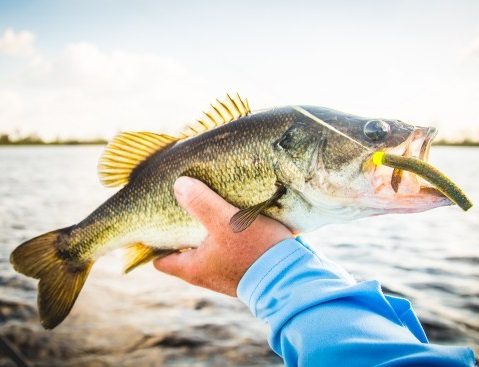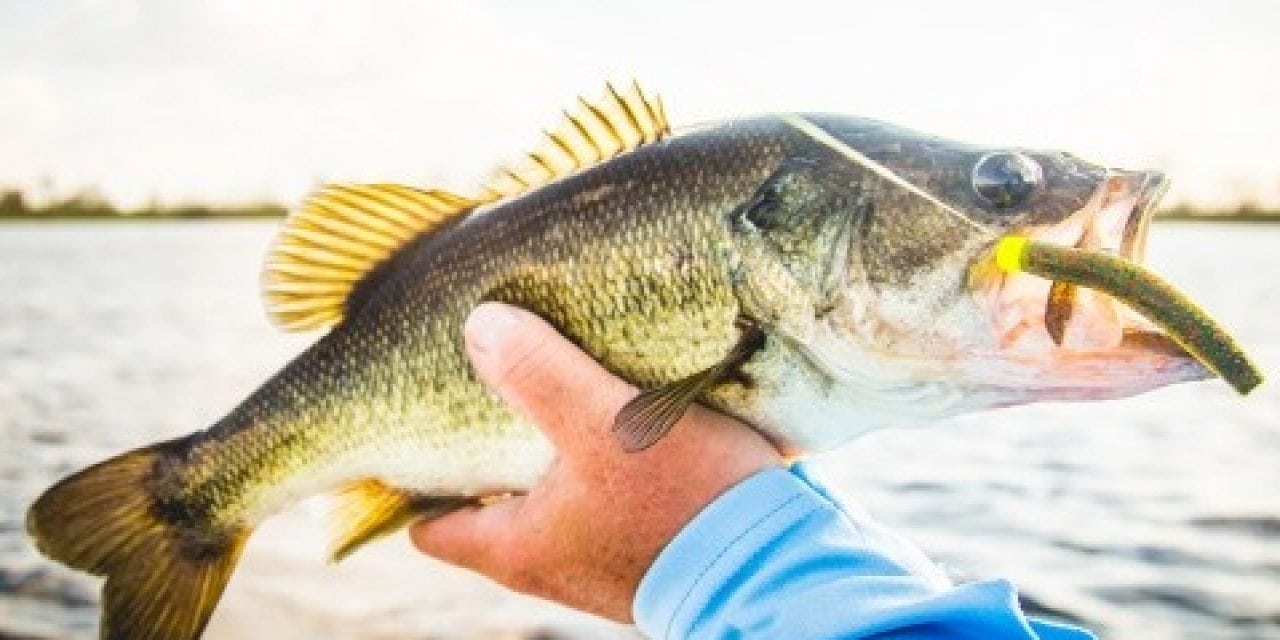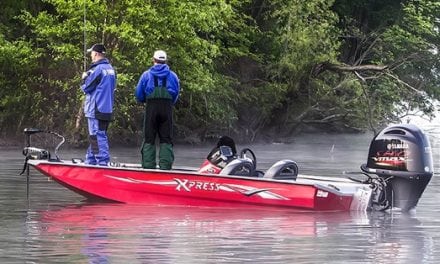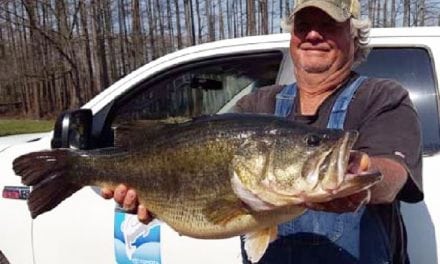 Over the last two years, the Ned Rig has definitely been picking up steam among recreational and tournament anglers alike. Just a short time ago this ultra-finesse setup was known only in the backyard of its birthplace in the Midwest, but today, you would be hard-pressed to find a serious bass angler who didn’t have some variation of the Ned Rig on-hand.
Over the last two years, the Ned Rig has definitely been picking up steam among recreational and tournament anglers alike. Just a short time ago this ultra-finesse setup was known only in the backyard of its birthplace in the Midwest, but today, you would be hard-pressed to find a serious bass angler who didn’t have some variation of the Ned Rig on-hand.
Nonetheless, while many anglers have picked up on the Ned Rig due to its simple ability to produce bites in tough conditions, most are still not maximizing its effectiveness due to a few simple – and easily corrected – misconceptions or errors in tackle selection and technique. Below is a list of missteps we see over and over again from our customers that certainly limit the success of this unique presentation.
1. Using Hooks That Are Too Big
Initially, many anglers scoffed at the small, light wire size 1 and 2 hooks on our Finesse ShroomZ jigheads and labeled them ‘crappie jigs’ that weren’t suitable for bass fishing…until they actually tried them. The fact is that you will get more bites and maximize the effectiveness of ElaZtech finesse baits by using a jighead with a small, light wire hook, whether it’s one of our Finesse ShroomZ or a jighead made by another manufacturer.
One of the main reasons why the Ned Rig works so well is because of the buoyancy of our ElaZtech material. At rest, the baits stand up off the bottom and move ever so slightly, even when deadsticked. On the fall, the buoyancy allows for a slower, more horizontal, sometimes spiraling descent. A larger hook can not only weigh down the bait and cause it not to stand up properly, but it can throw off the balance of the rig and cause it look unnatural in the water.
Moreover, the ElaZtech material is extremely soft and limber, much more so than conventional soft plastic materials. The portion of the bait with the hook running through it is stiffened by the hook shank itself, but the section behind the hook is completely uninhibited and moves freely and naturally. The more material behind the hook, the better action the bait will display in the water.
In fact, Midwest pioneer and Ned Rig namesake Ned Kehde routinely uses tiny size 6 hooks in his fishing. Ned is the most meticulous note-taker and documenter of his fishing efforts, and his logs reveal no problem with hooksets or thrown hooks with these tiny hooks. We selected size 1 and 2 hooks for our Finesse ShroomZ as we felt it was a healthy balance between allowing for plenty of bait action and lift and offering a product that consumers would not be uncomfortable using for bass fishing.
2. Using Tackle That Is Too Heavy
When we say that the Ned Rig is an ‘ultra-finesse’ technique, we mean it! Chances are that many bass fishermen may not even own a rod that is suitable for a Ned Rig. Due to the light weight and diminutive size of a Ned Rig, spinning tackle is a must. Spinning rods designed for shaky head, drop shot, or split shot techniques may be suitable, provided that they have a very light tip to accommodate the small hooks of the Finesse ShroomZ jigheads. Other anglers have employed trout or panfish rods, which probably are a better choice. Several manufacturers, like Lew’s for instance, have designed technique-specific Ned Rig rods to help anglers match the right rod to the rig. Generally, rods should be light or medium-light power with a fast action and a very soft tip.
While standard 2500 or 3000 size bass reels will work fine, we have found that smaller 1000 size spinning reels usually reserved for trout or panfish are even better, as they are built to handle fine diameter lines. In addition, the smaller spools on 1000 size spinning reels take up less line with each turn of the handle and enable anglers not accustomed to this technique to slow down their presentations.
Though some anglers opt for fluorocarbon line, light braided line of 10 lb. test or less is better as it allows for longer casts with very lightweight jigheads. Tying on a light fluorocarbon leader is also recommended.
Just as important as tackle is the drag setting. Due to the small hooks on the jigheads that work best for this technique as well as the light wire they are deliberately built from, much lighter drag settings than bass fishermen are accustomed to are required. One common complaint we get about our Finesse ShroomZ jigheads is that the hooks bend out on big fish; however, the bottom line is that if you are straightening hooks, then your tackle is too heavy or your drag is not set light enough. Many bass over 10 lbs., pike over 20 lbs., and redfish over 30 inches have been caught using these jigheads with appropriate tackle, so they’re plenty strong to catch big fish.
3. Using Too Heavy a Jighead
When we get asked which weight jighead to use for the Ned Rig, we always tell people to use the lightest jighead possible. Fish routinely hit the Ned Rig on the fall, and if you’re using too heavy a jighead, the bait will plummet past the fish straight to the bottom. A lighter head will simply keep the bait in the strike zone for longer and will allow for that tantalizing, slow descent that makes the Ned Rig so effective. A lighter head also hangs up less on rocks and helps keep the bait out of grass or algae that lines the bottom of many lakes.
There are certainly occasions where a heavier 1/6 or 1/5 oz. head is necessary, like in depths of greater than 20 feet or in significant current. Day in and day out, a lighter head will simply produce more bites. For general shallow water lake or pond fishing, the 1/10, 1/15, and 1/20 oz. jigheads should be your mainstay.
4. Throwing Away a Bait After a Few Fish
We can’t tell you how many times we’ve seen a novice Ned Rigger toss an ElaZtech bait after catching a few fish on it. This may seem counterintuitive, but ElaZtech finesse baits actually get better with age! After being chewed on by a few fish, the flexible material starts to exude salt and takes on a softer, spongier feel with a slimy coating that is irresistible to fish. Small rips or tears from teeth limber the bait up even more.
Many diehard Ned Riggers go as far as to gluing worn baits onto their jigheads or even tying them together with thread. Others stretch their baits before using them to eliminate some of the salt and give them the sought-after spongy texture, while others soak the baits in water to achieve the same effect.
5. Fishing Too Fast
Most bass fishermen love power fishing and love fishing moving baits. There’s just something exhilarating about covering ground with a flipping stick and yanking bass from thick cover, and having a bass smash a topwater plug, crankbait, swimbait, or bladed jig is equally exciting – not to mention that’s how most tournament anglers are fishing these days, and bass fishermen are quick to mimic their techniques even on recreational outings.
In our mind, fishing the Ned Rig is just as much – if not more – fun and exciting, though the excitement comes from the sheer number of bites you get and the fight on light tackle – not to mention out-catching just about everyone else on the water! The key to generating all of those bites is to slow down you presentation.
This takes discipline, especially when using lightweight jigheads. Let that bait sink all the way to the bottom. Deadstick it for a few seconds on the bottom before hopping, dragging, or swimming it. Drag it very slowly along the bottom and then let it sit again. Doing all of these things truly maximizes the effectiveness of the ElaZtech material, allowing it to work for you whether the bait is slowly spiraling through the water column or standing up off the bottom and moving ever-so-slightly at rest.
6. Setting Hooks Too Hard
Just like tackle and drag settings must be adjusted to account for the small, light wire hooks used with the Ned Rig, so must hook setting techniques. Most bass fishermen are accustomed to hard hooksets while power fishing, but setting the hook hard with the Ned Rig is counterproductive and can result in bent or pulled hooks.
The hooks used on our Finesse ShroomZ jigheads are made from light wire and are very sharp out of the pack, a combination that leads to easy hook point penetration with very little pressure. When setting the hook, simply reel tight and lean into the fish, loading up the rod. Just a little bit of pressure is all that’s needed to firmly embed the hook in a bass’ mouth.
To that end, maintaining a sharp hook point is critical when using the Ned Rig. It is always wise to carry a small hook file when fishing the Ned Rig to touch up those hook points after a fish catch or dragging the hook across a rock. We prefer a small diamond hook file, the type used more commonly by fly fishers to sharpen tiny hooks meant for stream trout. It really is amazing how much of a difference keeping a sharp hook point can make.
7. Using Baits Made From Materials Other Than ElaZtech
While this point may sound entirely self-serving coming from a manufacturer like Z-Man, it is perhaps the most important note on this list. Sure, the small and simple profile of the Ned Rig has a lot to do with why it gets so many bites, but the ElaZtech material is just as important. As noted above, the buoyancy and softness of ElaZtech are keys to providing the absolute best action, both on the retrieve, on the descent, or at rest. In addition, the material’s durability presents a superior value, but more importantly, keeps you fishing rather than re-rigging when the bite is on.
This importance of using ElaZtech baits truly cannot be overstated, and we hear this nearly every day from customers who have experienced this for themselves. Case-in-point, here’s a note we just received from a customer:
“I have to admit, after recently learning about and deciding to try the Ned Rig, it just wasn’t working out. Of course, I was ripping a standard Senko in half and using a mushroom-shaped swimbait head. What a joke – I couldn’t figure out how people were actually catching fish on it. I was at a local retailer and saw the TRD and the Finesse ShroomZ heads and bought 2 packs of heads and 4 packs of plastics and set out for my tournament the following day. I AM A BELIEVER!!! What a difference! I am so impressed, I caught so many fish doing something I had never done before. Best part – one single bait lasted all day. To top it off, I ended up winning the tournament by over a pound.”
While we routinely read in tournament reports about professional anglers using other non-ElaZtech plastics on their Ned Rigs, most of this can be chalked up to sponsor obligations and conflicts that prevent them from using or mentioning Z-Man baits. The fact is that we’ve shipped product directly to dozens and dozens of tour-level anglers with conflicting soft plastic sponsors over the last couple of years, including overnighting baits to tournament locations at the last minute on multiple occasions. And, the most dedicated and diehard Midwest finesse anglers are still using predominantly ElaZtech.
8. Limiting Yourself To Certain Bait Profiles
Again, this last point definitely may come across as self-serving, but we feel it is absolutely worth mentioning nonetheless. The 2.75″ Finesse TRD (or half of 5″ ZinkerZ) is far and away the most popular Ned Rig soft plastic, and for good reason – it flat-out catches fish. However, anglers are shorting themselves by having a few packs of TRDs on-hand and figuring that they have their Ned Rig bases covered.
Like other types of soft plastic fishing, there are many Ned Rig profiles that work at different times of the year or under certain conditions. Most any small soft plastic bait can be used with the Ned Rig; in the Z-Man line alone, the 4″ Finesse WormZ, 4″ Finesse ShadZ, 4″ Hula StickZ, 3.75″ StreakZ, 2.75″ TRD TubeZ, 2.5″ Slim SwimZ, 2″ CrusteaZ, 3.5″ GrubZ, and soon-to-be-released 3″ TRD HogZ all complement the Finesse TRD as part of Ned Rig system.
If you read Ned Kehde’s frequent entries in the Finesse News Network, you’ll see that he consistently relies on the Finesse WormZ and Finesse ShadZ while fishing in Kansas reservoirs. Z-Man finesse bait designer and Bassmaster Classic veteran Drew Reese, along with several tour-level anglers, feel that the Hula StickZ gives them a better shot at connecting with larger fish on a regular basis. A group of finesse devotees in Texas have seen their catch rates increase by adding the Slim SwimZ, a diminutive swimbait, into the mix, while northern anglers have recently latched onto the TRD TubeZ as a go-to finesse bait. We could go on and on, but the point is that having several different profiles on-hand and experimenting with them in various situations will undoubtedly help up your success with Ned Rig!
The post 8 Most Common Ned Rig Mistakes appeared first on ODU Magazine-North America's #1 Digital Fishing Magazine.
















